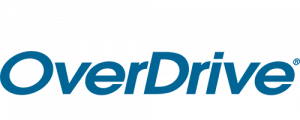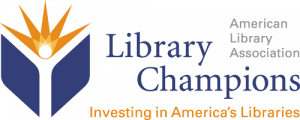LEARNING TO CODE CAN CHANGE A STUDENT’S FUTURE.
Computing jobs are growing almost twice as fast as those in other fields, but only 40% of U.S. schools teach programming.* When libraries offer coding education and resources, they give users from all backgrounds a chance to succeed in today’s tech-driven world.
.
The supply for computer science expertise cannot meet demand. The formal education system is not preparing all students with the skills they need. Only 40% of U.S. K-12 schools offer CS with programming/coding1; 9% of U.S. K-12 schools offer AP CS 2; and Black students are 23% less likely than White students to have CS classes in schools.3
Underrepresented groups face barriers to entering, and staying in, careers in computer science. 2016 workforce data show that 8% of computing jobs were held by Blacks/African Americans, 7% by Hispanics/Latinos, and 24% by women4.
Libraries can diversify computer science.
Libraries are already serving diverse communities and playing a central role in providing access to technology. Close to 90% of libraries offer basic digital literacy training5; 66% of libraries have STEM (science, technology, engineering, and math) efforts underway or are planning to implement them6. Libraries are prepared to integrate computer science training. Learn more about the ALA’s Libraries Ready to Code initiative to support programming education in libraries.
*1Google Inc. & Gallup Inc. (2016). Trends in the State of Computer Science in U.S. K-12 Schools. http://goo.gl/j291E0 (Accessed June 29, 2017)
2Google Inc. & Gallup Inc. (2016). Diversity Gaps in Computer Science: Exploring the Underrepresentation of Girls, Blacks and Hispanics. http://goo.gl/PG34aH (Accessed June 29, 2017)
3 Google Inc. & Gallup Inc. (2016). Diversity Gaps in Computer Science: Exploring the Underrepresentation of Girls, Blacks and Hispanics. http://goo.gl/PG34aH (Accessed June 29, 2017)
4 Employed persons by detailed occupation, sex, race, and Hispanic or Latino ethnicity (2016). https://www.bls.gov/cps/cpsaat11.htm (Accessed June 29, 2017)
5American Library Association (2006). Public Library Use. http://www.ala.org/tools/libfactsheets/alalibraryfactsheet06 (Accessed June 29, 2017)
6Rose, R.N. (2015). Survey of Chief Officers of State Library Agencies. American Library Association. Chicago, IL http://www.ala.org/research/sites/ala.org.research/files/content/coslafy15.pdf (Accessed June 29, 2017)

Join Us
Sign up for the Libraries Transform newsletter to receive monthly updates about the American Library Association's public awareness efforts.
Libraries Transform Toolkit
The Libraries Transform Toolkit provides a collection of free resources, including graphics, key messages and ideas, that can be used for marketing, advocacy, outreach, fundraising and more.
50 Facts About Libraries
Help spread the word about the value of America's libraries by sharing these 50 facts.



